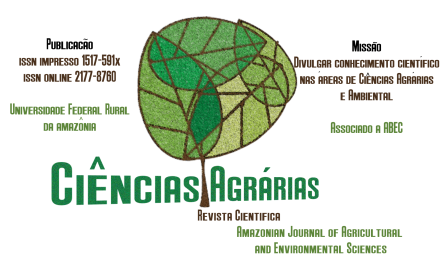Crescimento de espécies madeireiras em uma floresta acreana e compatibilidade com a legislação florestal
Revista de Ciências Agrárias Amazonian Journal of Agricultural and Environmental Sciences
Crescimento de espécies madeireiras em uma floresta acreana e compatibilidade com a legislação florestal
Autor Correspondente: Henrique José Borges de Araujo | [email protected]
Palavras-chave: Ciclo de corte, Crescimento de árvores, Intensidade de corte, Manejo florestal, Cutting cycle, Tree growth, Cutting intensity, Forest management
Resumos Cadastrados
Resumo Português:
O diâmetro do fuste das árvores é uma medida de grande importância silvicultural por permitir múltiplos cálculos dendrométricos, entre estes o volume, portanto, o crescimento do diâmetro é fundamental na determinação do crescimento volumétrico das árvores. O objetivo deste estudo é avaliar por meio de cintas dendrométricas o crescimento de espécies madeireiras em uma área manejada no estado do Acre, possibilitando relacionar a intensidade exploratória da colheita e os ciclos de corte referenciais da legislação com a capacidade de reposição da floresta. Por cinco anos, foram monitoradas 509 árvores distribuídas em cinco classes diamétricas (DAP variando de 9,5 cm a 140,0 cm) e pertencentes a 27 espécies. O crescimento individual diamétrico médio foi de 0,542 cm ano–1 e o volumétrico de 0,053 m3 ano–1. Em geral, as correlações entre o crescimento diamétrico com o DAP e as características das árvores foram muito baixas. O ciclo de corte médio encontrado foi 40,8 anos, variando de 9,3 a 97,9 anos entre as espécies monitoradas. Os resultados indicam que as intensidades e os ciclos de corte da legislação florestal estão superestimados e são incompatíveis com a capacidade de restabelecimento da floresta.
Resumo Inglês:
The diameter of the trees is a measure of great silvicultural importance and allows multiple dendrometric calculations, the volume between them, thus the growth of the diameter is essential in determining the volumetric growth of trees. The objective of this study is to evaluate by dendrometric bands the growth of commercials timber species in a managed area in the state of Acre, Brazilian Amazon region, making it possible to relate the exploratory intensity of harvest and the reference cutting cycles of legislation with the recovery capacity of the forest. For five years were monitored 509 trees distributed in five diameter classes (DBH ranging from 9.5 cm to 140.0 cm) and belonging to 27 species. The individual average diameter growth was of 0.542 cm year–1 and the volumetric growth of 0.053 m3 year–1. In general, the correlations between the diameter growth with the DBH and the environmental conditions of trees were very low. The average cutting cycle found was 40.8 years, ranging from 9.3 a 97.9 years between the monitored species. The study results showed that the intensities and cutting cycles of the forestry legislation are overestimated and are incompatible with the recovery capacity of the forest.

